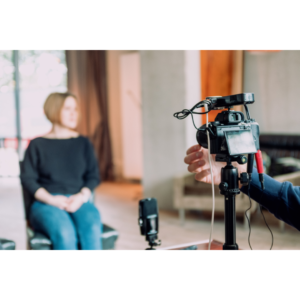Advanced Legal Videography Solutions for Legal Professionals.
Why Legal Videography Is Vital for Accurate Legal Record-Keeping
In the realm of lawful procedures, the precision of record-keeping is critical, and lawful videography emerges as a vital tool in this context. By capturing the nuances of spoken and non-verbal communication, it significantly minimizes the potential for misconception that can come with traditional written documents. The conservation of authentic aesthetic evidence not only enhances the credibility of testaments yet also adds to an extensive account of events. As we discover the diverse benefits of legal videography, one should consider its effects for the future of judicial integrity and transparency.
Relevance of Visual Evidence
Establishing the significance of visual evidence in lawful process is paramount for ensuring exact record-keeping and boosting the total stability of the judicial procedure. Visual proof works as a critical tool in recording events, conditions, and various other essential information that might be important to an instance. Unlike written accounts, which are susceptible to interpretation and predisposition, aesthetic recordings provide an objective, unalterable depiction of realities as they took place.
This type of evidence can catch a range of elements, consisting of witness actions, ecological context, and physical evidence, all of which might affect judicial results. By presenting a clear and comprehensive visual story, legal videography eliminates obscurity and aids to preserve the authenticity of the evidence.
In addition, visual evidence can be instrumental in minimizing disagreements over factual disparities, as it enables a direct contrast against testament and various other documented documents. In an era where electronic innovation is increasingly widespread, the capability to present aesthetic evidence effectively can significantly boost the overall top quality of legal proceedings. Inevitably, the consolidation of aesthetic proof not only strengthens the paperwork process however also enhances public count on the judicial system by advertising transparency and liability.
Enhancing Testimony Trustworthiness
The integration of lawful videography into court room proceedings dramatically enhances the reputation of witness statement. By recording the nuances of verbal and non-verbal communication, video clip recordings supply a more detailed representation of a witness's temperament, emotions, and integrity. This aesthetic documentation enables jurors to observe the witness's body movement, faces, and general manner, which are important parts that can influence their assumption of testimony trustworthiness.

In addition, the visibility of video footage can discourage witnesses from providing deceptive or overstated statements, as they are aware that their testament is being taped. This accountability reinforces the honesty of the judicial process. Ultimately, lawful videography serves as a vital device in making sure that witness statement is not only properly portrayed but additionally seen with enhanced credibility by all events included.
Comprehensive Document Preservation
Comprehensive record conservation is vital for preserving the integrity of lawful procedures. Legal videography functions as a critical tool in this procedure, supplying a precise visual and acoustic account of statements, depositions, and other zero hours in an instance. Unlike standard written transcripts, video clip recordings record the subtleties of body movement, tone, and feeling, which are important for understanding the context and intent behind declarations made throughout legal process.
Incorporating audiovisual aspects right into record-keeping improves the conservation of evidence, making sure that it continues to be intact and easily accessible throughout the lawful informative post process. This is especially vital in cases where the dependability of witness declarations might be challenged, as visual recordings can corroborate cases and offer clearness. Furthermore, video clip documents can be important throughout allures or retrials, supplying an unaltered representation of the original statement.

Additionally, the ability to evaluate video clip proof allows legal professionals to identify vital information that might have been forgotten in created documents. By keeping a thorough archive of lawful procedures with videography, legislation firms can support the greatest requirements of accuracy and accountability, ultimately adding to a fairer judicial procedure.
Simplifying Legal Procedures
Improving legal process is crucial for boosting effectiveness and minimizing delays within the judicial system. Legal videography acts as an essential tool in accomplishing this goal by giving clear and exact visual documentation of court hearings, depositions, and testaments - legal videography. This modern technology permits real-time recording, guaranteeing that all verbal and non-verbal signs are caught, which can help with quicker resolution of disagreements
The combination of videography into lawful processes minimizes dependence on standard methods, such as extensive transcripts, which can be time-consuming to generate and evaluate. By having actually access to recorded video, attorneys can promptly reference essential moments, boosting go now their ability to prepare and existing situations effectively. This immediacy likewise aids in the clearing up of testimonies, minimizing the potential for misconception.

Admissibility in Court
Accurate documents is important not just for effectiveness but additionally for making sure that evidence is acceptable in court. Legal videography offers as a crucial device in this process, supplying a dependable aesthetic record of statements, statements, and events.
To be regarded acceptable, lawful videography should comply with established procedures, such as proper devices use, appropriate lights, and clear audio capture. Furthermore, it is vital to have certified videographers that understand the legal needs bordering evidence collection. legal videography. The chain of wardship must likewise be kept to avoid any type of insurance claims of meddling or modification
In addition, lawful videography can enhance the persuasiveness of evidence by supplying jurors with a straight sight of the testament, enabling a more engaged understanding of the situation. In recap, the assimilation of lawful videography right into record-keeping not only supports efficiency however likewise strengthens the honesty and admissibility of proof in court process.
Verdict
Finally, legal videography plays a critical function in making certain exact lawful record-keeping by giving unbiased aesthetic documentation. This method boosts the trustworthiness of statements, protects detailed records, and improves legal proceedings. Additionally, the admissibility of top quality video evidence in court more emphasizes its value. Inevitably, the unification of lawful videography into the judicial process promotes transparency and reinforces public count on the integrity of the legal system.